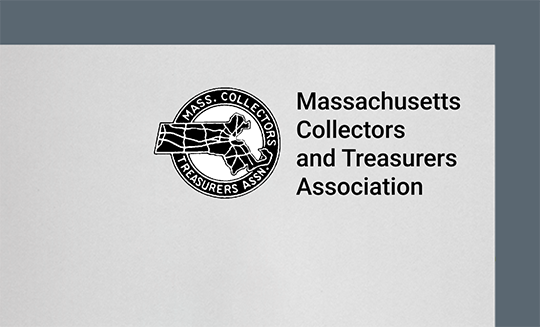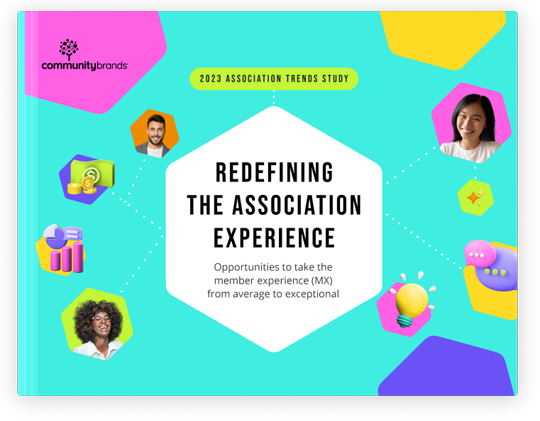Is bottom-line revenue top of mind for your association? And, did you know member engagement is the biggest factor in revenue per member?
The ROI of engagement is unique to each organization, but its importance to the overall health of an organization is clear. Engagement is one of the underlying motivations for implementing and maintaining an association management software (AMS) system—the ability to track, analyze and increase member engagement with data.
But what type of data are you looking for? And, of course, where do you find it?
An AMS system provides a plethora of data used in a variety of ways. Here, we share 10 ideas about where to look for the data you need and tips to increase engagement within your AMS.
1. Identify Areas of Engagement: When digging for gold, it’s best to go to the areas of known gold density. When looking for engagement data, make sure to identify all areas where members are likely to engage with your organization. We’re going to cover most of the available channels cited in this post, but it certainly doesn’t hurt to create a list in the beginning, even if to ensure you don’t miss any.
2. Email Segmentation: Email blasts, transactional emails or list-specific emails—we know you’re sending them. But, are you analyzing the data generated from members interacting with them? It all starts with your open rate. If nobody (or under 20% to 40%) is opening your emails, your chance to engage with your audience never happened. Look at the best-performing emails in terms of open rate and see what their subject lines have in common. Once you have a handle on your subject lines, drill down into your click data. Most emails, apart from newsletters and roundups, should focus on one link. Find out which types of links are getting the most clicks—event info, educational info, organizational updates. Analyzing click data can help you further segment your lists. Segmented email lists increase engagement across the board, and they help lower negative email stats.
3. Social Media: If you’re looking to better understand your audience, social media should be one of the first places you look. There are two good reasons for this. Social media platforms have an incredible wealth of both demographic and psychographic data you simply can’t find anywhere else. People are more likely to act on social media, unearthing their true, non-work selves. If you’re looking to create a more robust member profile, understanding their motivations and actions via social media can supplement what you know about their habits in relation to your organization.
4. Workflows: We already discussed email, but this feature deserves its own section. An email sequence, whether onboarding, educational or other, can tell you a lot about your members. Are members dropping out of the sequence at the same step in the process? Then you need to look closer at that step. Perhaps they need more info to complete the step or they’re not properly prepared. Either way, you need to fix the bottleneck! One of the great things about fixing the bottleneck is that you can automatically increase your overall member engagement by sending more people to the next step, where they can click, convert or buy.
5. Events: Don’t forget about events! Event attendance is a huge sign of engagement, so you must capitalize on it. For starters, you want to separate your members into a several attendee categories: first-time, recurring, interested and potential. Once done, look at their corresponding data; think financial, digital engagement, social, etc. Spot any trends? Apply the learnings of whatever is working for recurring attendees to your potential attendees to maximize event attendance.
6. Webinars: Event attendance is a sign of a highly-engaged member, but it’s not always feasible due to travel, time constraints, budget, etc. But, webinars are like events . . . right?! Members must register, they must show up, and they spend a good deal of time with the presenter. Webinars are a cost-effective way to replicate the engagement of in-person events. Same as before, segment your attendees from frequent attendance to potential attendance. What are the tactics driving webinar registrations? How does email, social media or even advertising fit into the mix? If you’re sending out the recordings, are they getting opened? You might want to consider promoting an on-demand section for past webinars.
7. Online Communities: Online communities and forums are a great way to find qualitative data to increase member engagement. Are there questions which continue to pop up? Are they topics stirring up a lot of discussion? It might be worth looking at the cause and expanding your content offers to include those topics. If these members are taking the time to converse with one another, then it’s a sign of a highly-engaged member, and, therefore, a good occasion to increase those interactions. Online communities are a rare opportunity for transparent, two-way communication you can use to your advantage.
8. Retention and Renewals: Member retention is where the rubber meets the road. After all your measuring and optimizing, what percentage of members are renewing and keeping revenue coming in? There’s no hard and fast rule for how to go about the renewal process. But, anchoring your costs with value propositions can’t hurt. Also, addressing the renewal early and often may allow you to break down the commitment into smaller, more palatable bites for your members.
9. Certifications: Certification programs are becoming more popular. If your members are taking the time to educate themselves on a topic, why not reward each one of them with a digital badge to help promote newly-found knowledge. What’s great about this is they are also promoting your association at the same time! Additionally, the process of reading, watching videos, taking quizzes and sharing the results creates a ton of trackable engagement statistics. In this way, certification programs are a win-win for your association and your members.
10. Engagement Surveys: When you want to better serve your members by giving them the content they want, sometimes it’s best to ask. Checking in periodically with your membership ensures you’re focusing on the right topics. Don’t be shy about issuing surveys to solicit the feedback you need to give your members what they want. Obviously, you want to examine the data available to you before you send a survey. Only use a survey to find out what you don’t already know or to fill in the holes.
Engagement is your key to more revenue, happy members and overall good health for your association. We hope this list of ideas for increasing member engagement is useful for you.






